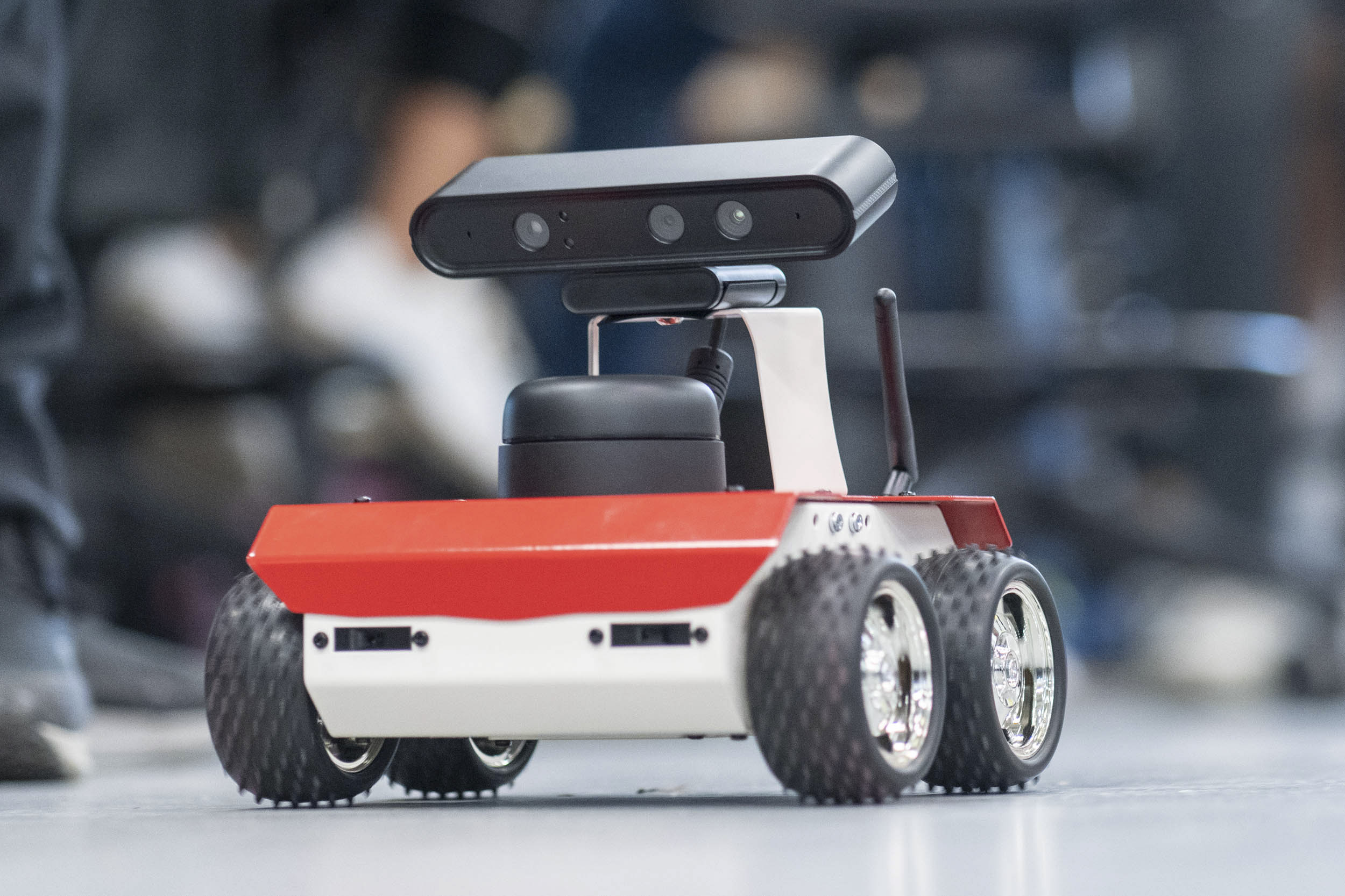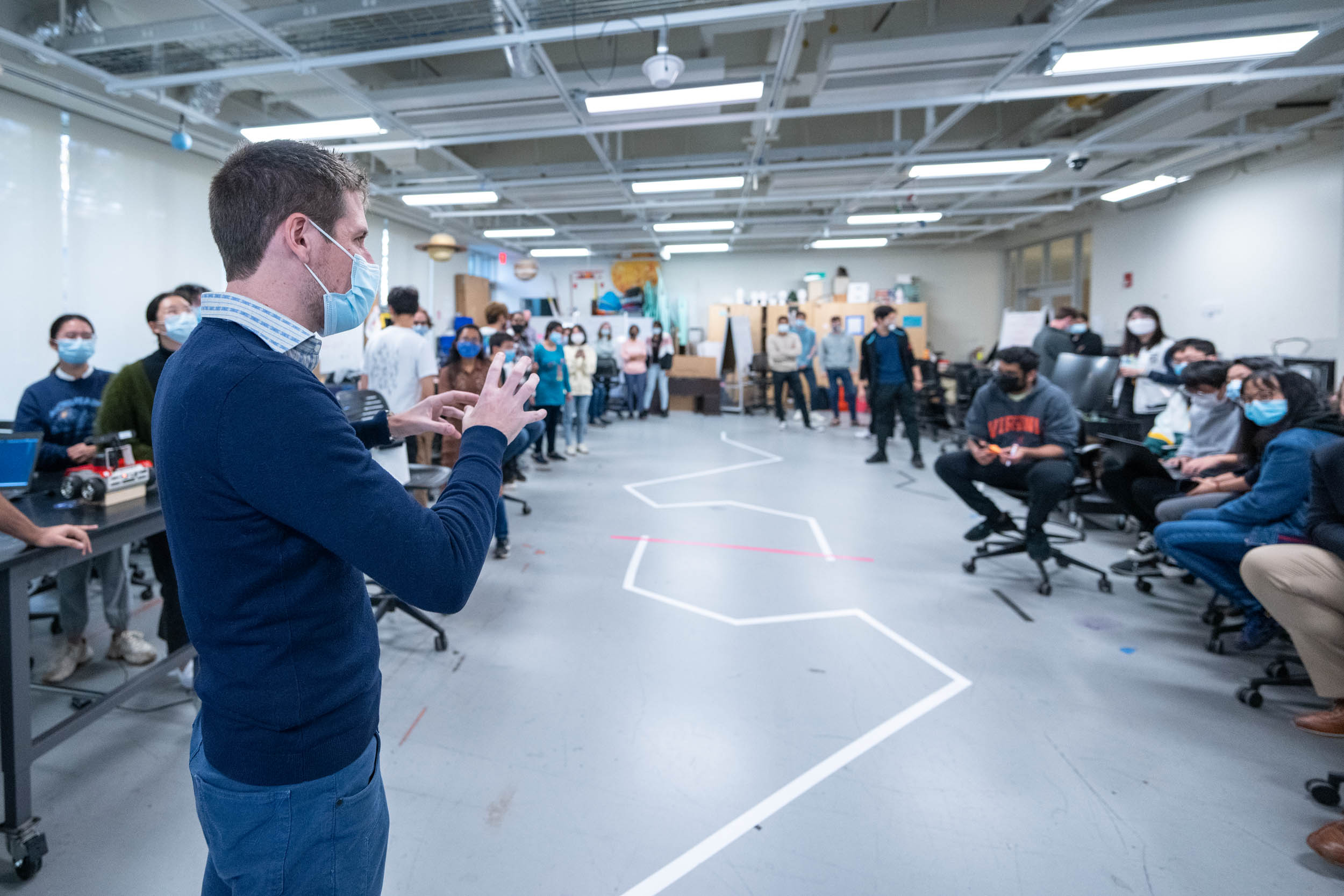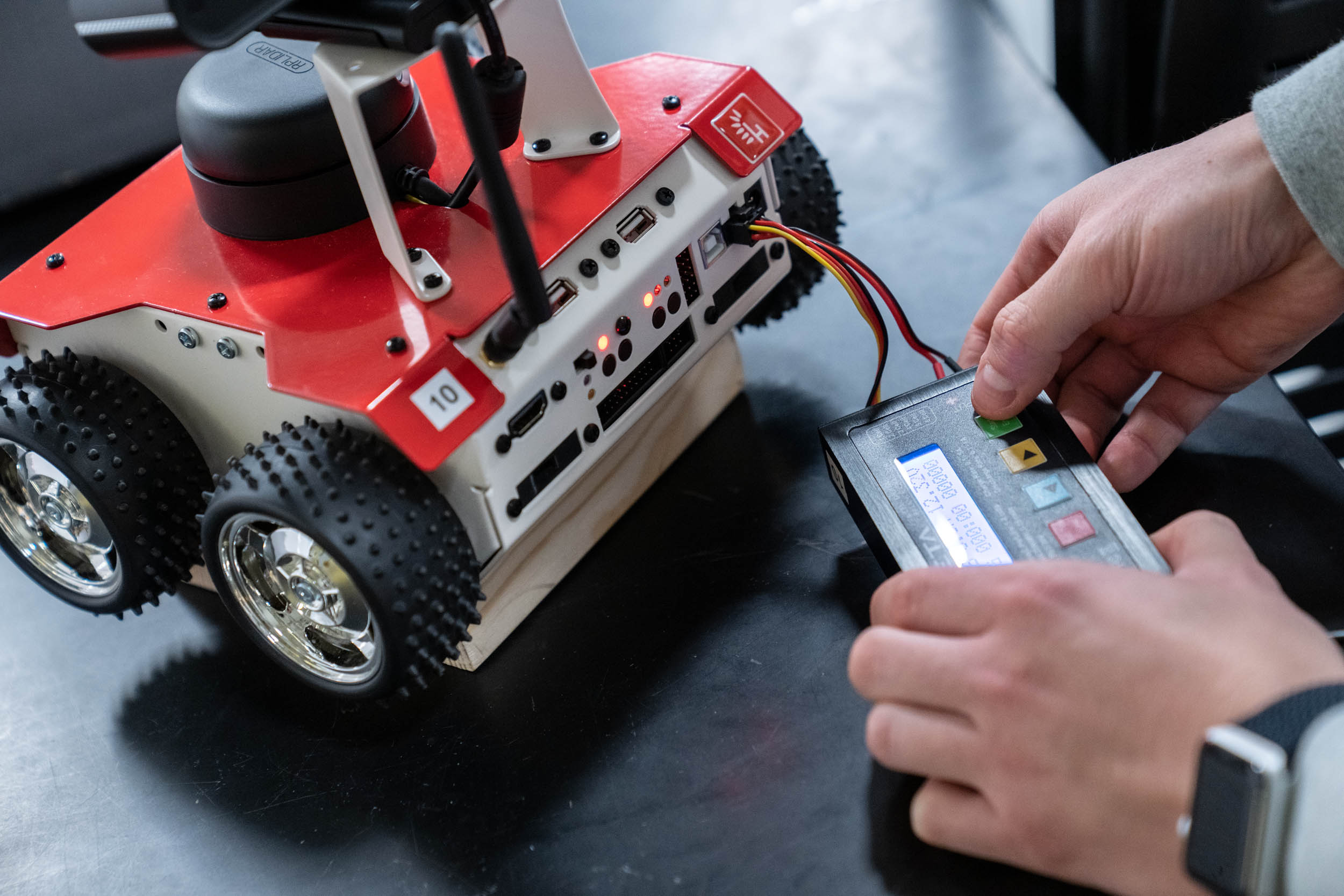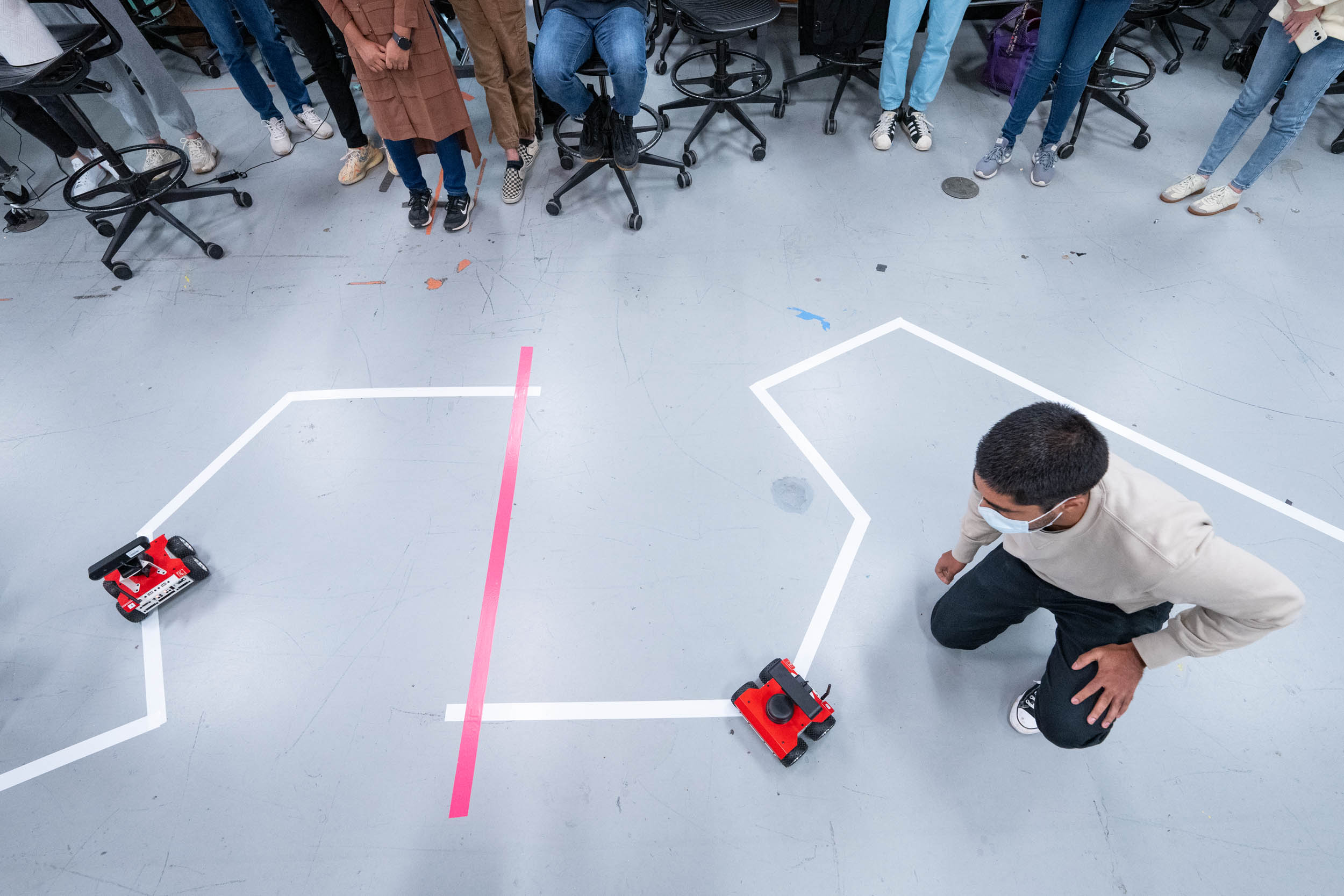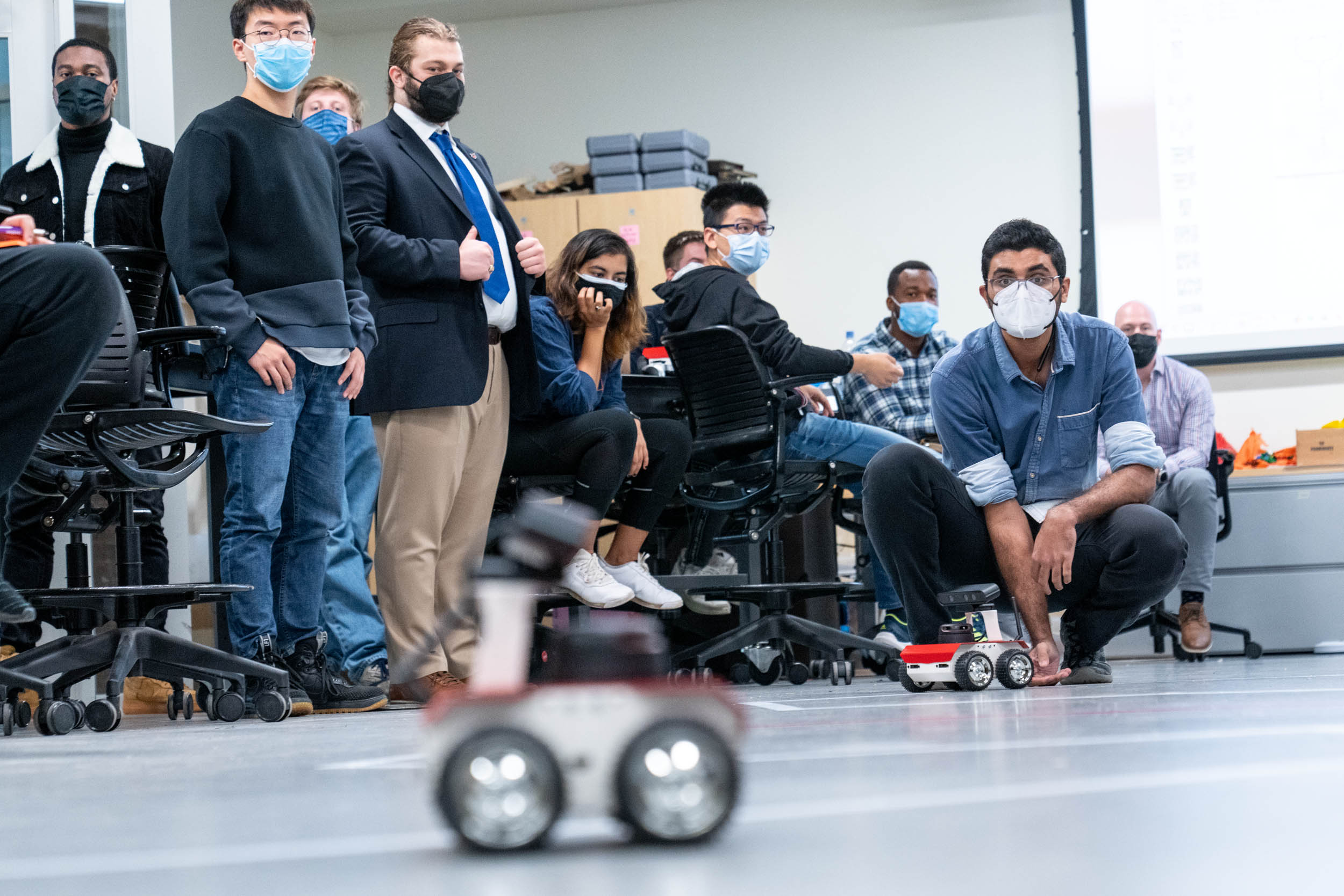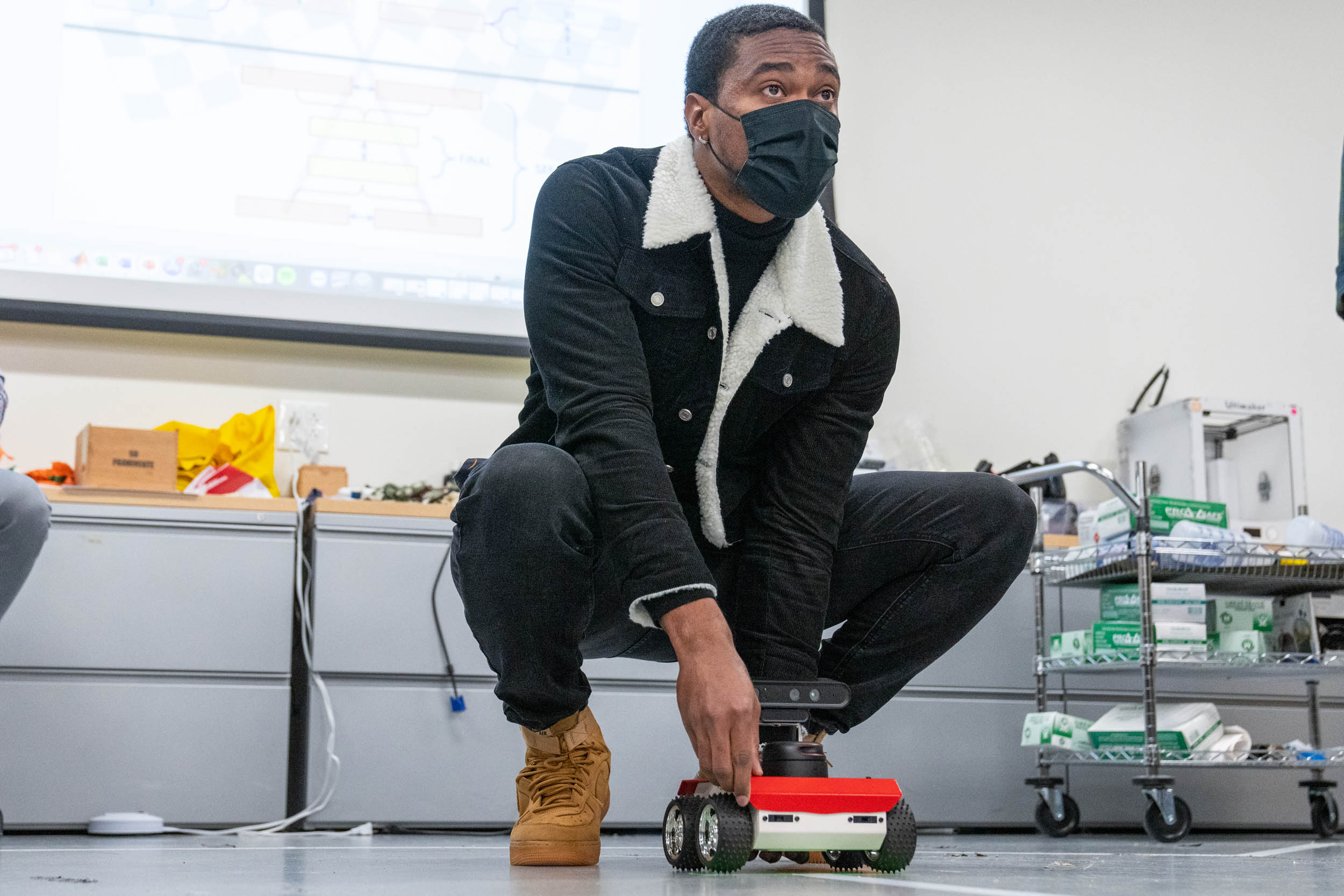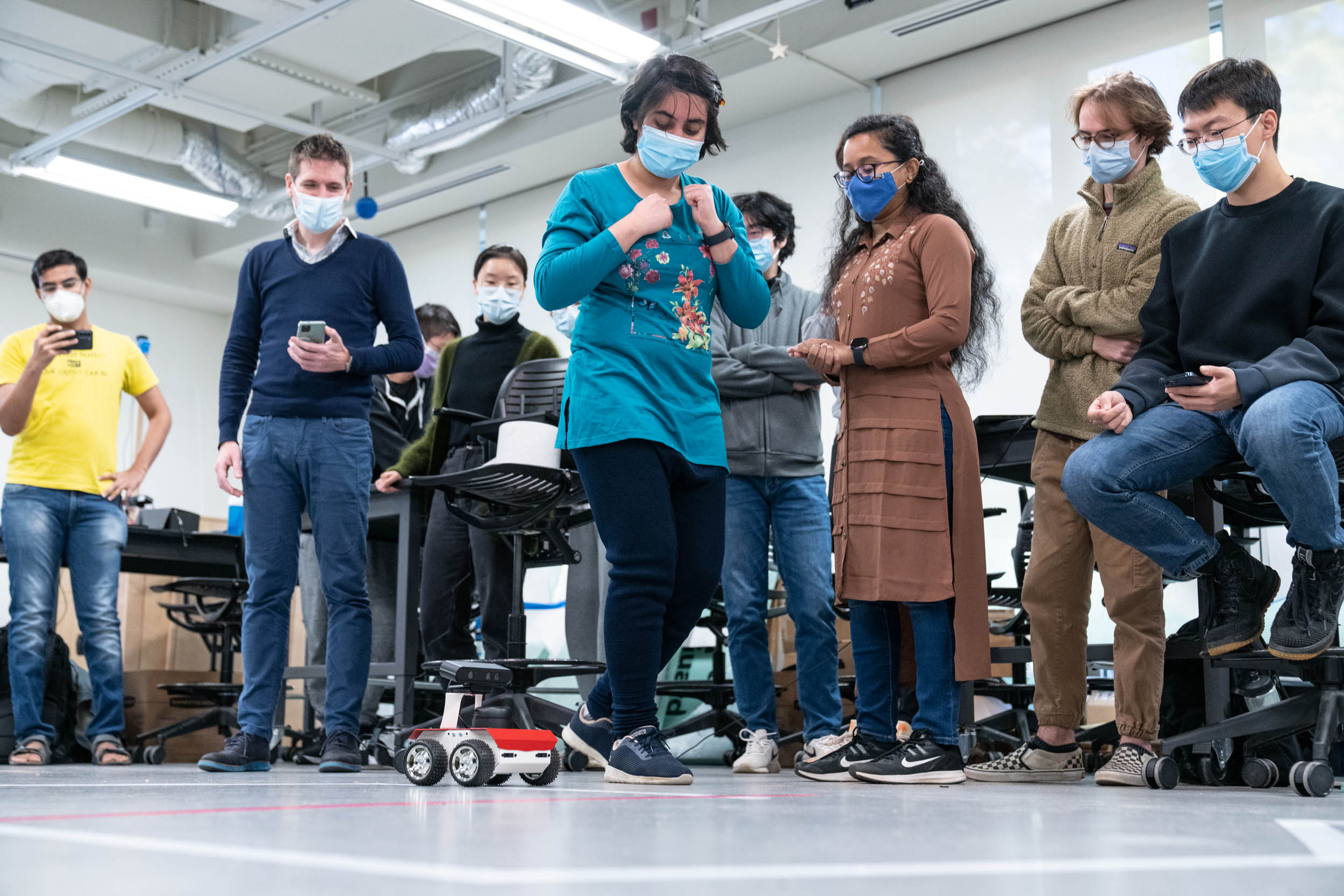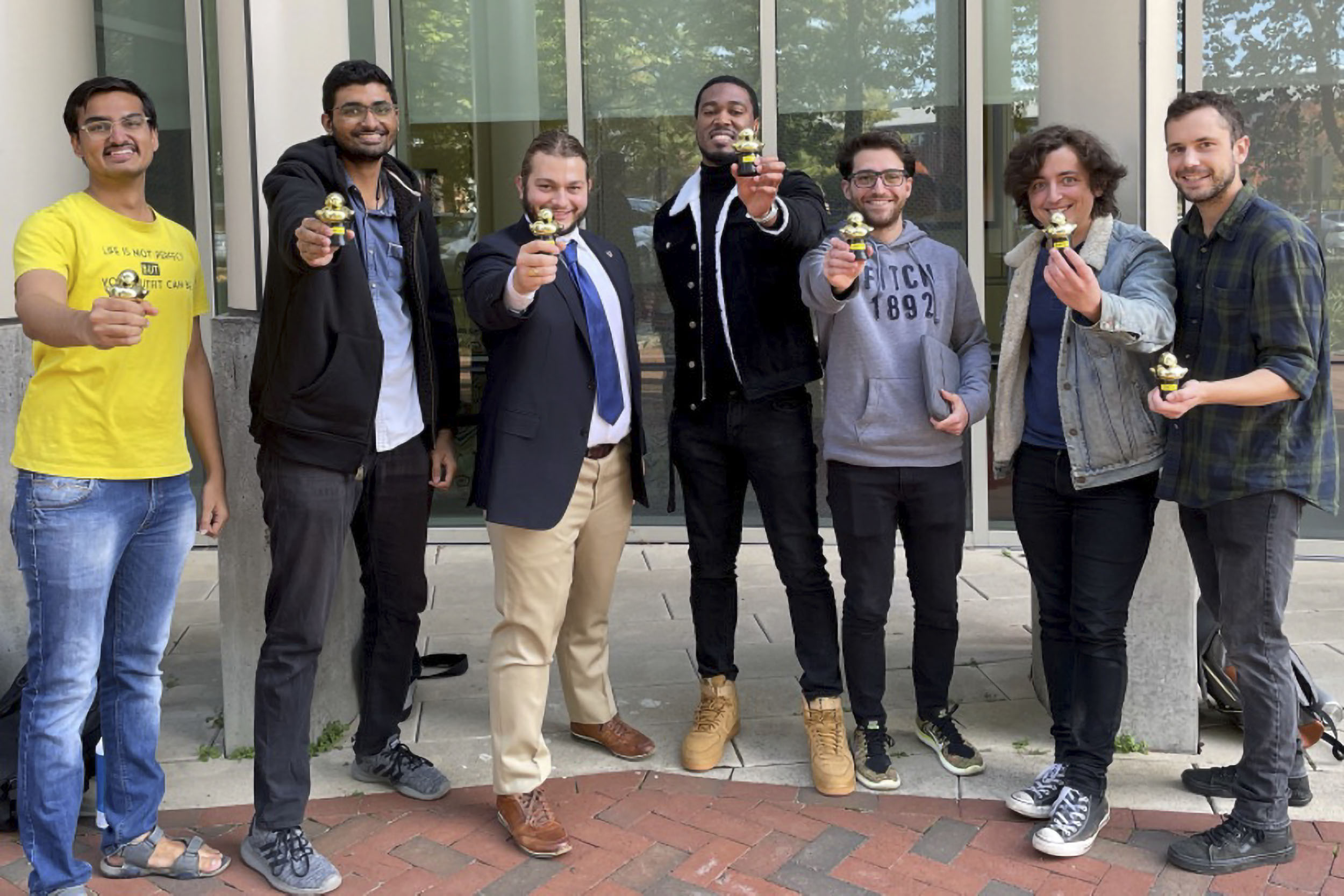Nicola Bezzo, an assistant professor in the departments of Engineering Systems and Environment and Electrical and Computer Engineering at the University of Virginia’s School of Engineering and Applied Science, teaches students how to build better autonomous systems through a mobile robot competition.
In a culminating event for Bezzo’s “Autonomous Mobile Robots” course, students collaborate to power their challenger robots, applying a combination of mathematical models and sensors that give the machines self-driving capabilities.
Bezzo is also a participating faculty member in UVA Engineering’s Link Lab for cyber-physical systems and oversees research to improve autonomous systems’ ability to maneuver safely in unforeseen or suddenly changing circumstances.
His course and its competition demonstrate to students the complex but important work that goes into ensuring a future in which people can trust autonomous systems.
